top 10 comic book artists
The 10 greatest comic book artists of all time
Putting pencil to paper is how it all starts. Since that fateful day in 1938 when Superman bounded into life in the first issue of Action Comics, artists and illustrators have found themselves pre-occupied with the burning desire to create superheroes.
Designing these characters, the worlds they protect and how they can live in synergy with words on a page is an art in itself - and comic book artists have a huge and worldwide following. These gods amongst geeks range from British trailblazer Dave Gibbons to American legend Jack Kirby. Comics are often derided as a 'low' art form, but they boast a massive influence on pop culture, with this summer's three biggest blockbusters all based on panels in print.
Here, we choose a collection of comic book artists who've excelled in painting pictures on our mindscape...
John Romita Jr
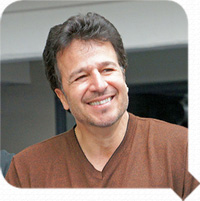
John Romita Jr was born on 17 August 1956 in New York City. He is the son of John Romita Sr who is widely renowned for his co-creation in two Spider-Man stories during the '60s and '70s. Working with writer Roger Stern, Romita Jr co-created the character Hobgoblin and he drew an issue in which Spider-Man would encounter the Juggernaut. More recently, he's become known for his work with writer Mark Millar on Kick Ass, a comic that spawned the mega-hit movie and a sequel.

Romita's Jr's talent truly shone during his spell drawing Iron Man, in the often over-looked Demon In A Bottle series. This featured everybody's favourite playboy billionaire and philanthropist-turned-superhero Tony Stark battling with booze and staring into the abyss of alcoholism. Romitas Jr's bold composition of panels still influence comic book artists today.
Did you know?
- John Romita Jr was nominated for a Will Eisner Comic Industry award in 1989 for his work on Daredevil.
- He drew Marvel's Wolverine with author Mark Millar as part of the character's 30th-anniversary celebration.
- On 4 May 2012, John sketched characters and signed comics for 50 hours straight to raise money for the Candlelighters Childhood Cancer Foundation of Nevada.
Brian Bolland
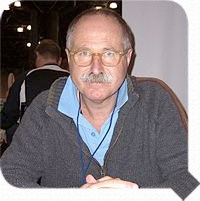
Brian Bolland was born in Butterwick, Lincolnshire, UK on 26 March 1951. Although American comics didn't actually appear in the UK until 1959, he was quick to fall in love. Bolland studied a degree in Graphic Design and Art History before finding his first job in 1972 on a Nigerian comic called 'POWERMAN'. After starting out illustrating fanzines, Oz magazine and the then-underground London listings magazine Time Out, he landed a job in 1977 designing 2000AD and Judge Dredd. Soon Bolland became part of the 'British invasion' era, in which American comic creators snapped up British designers.
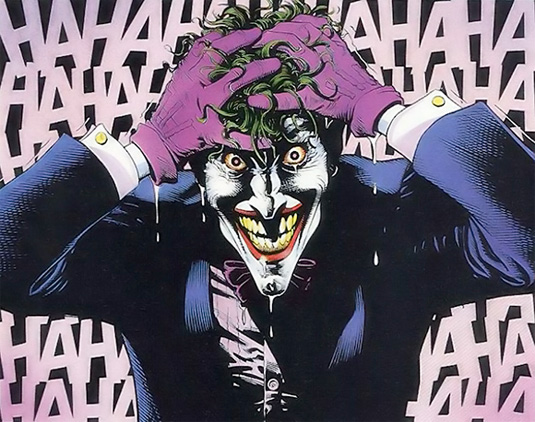
British-born Bolland was paid the ultimate compliment when he was given the choice of working on any DC Comics character. His choice resulted in Batman: The Killing Joke, published in 1988. Penned by legendary writer Alan Moore, the book explores the Joker's origin and is often held as the most controversial Batman story.
His artwork made a lasting impact: Heath Ledger cited The Killing Joke as an influence on his Oscar-nominated portrayal of The Joker in 'The Dark Knight' after studying a copy of graphic novel as reference material.
Did you know?
- Brian Bolland gained his first award as 'Best Newcomer' by the Society of Strip in 1977.
- He went on to collect a total of three Eisner awards and three Harvey awards... phew!
- He has recently been working on the DC Comic 'Dial H for Hero'.
Will Eisner
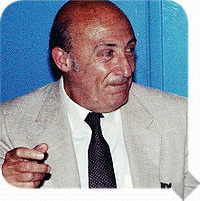
Will Eisner was born in Brooklyn in 1917 and sadly passed away on 3 January 2005. He's widely renowned as one of the comic world's most important and beloved contributors, and often hailed 'The Father of the Graphic Novel'. The term 'graphic novel' was coined in the '60s, but only used as a marketing category for the first time for Eisner's A Contract with God in 1978. His comic design career started out as a cartoonist for the New York American Newspaper. Eisner was then snapped up by Wow, What A Magazine! in 1935, where he wrote and drew comic strips. His most famous work, however, is The Spirit which was first published in 1940 and went on to become a live action movie in 2008.
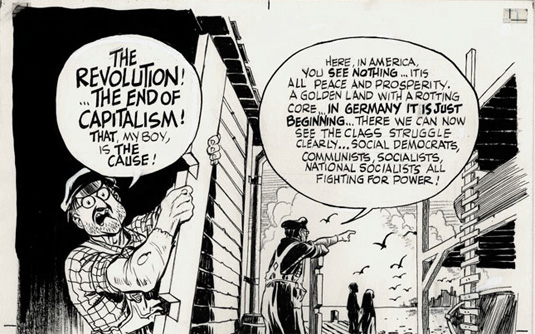
Yet it is his work To The Heart Of The Storm, an autobiographical account of American life in the '30s and '40s, which best displays his prowess. The storm in the title is Word War Two, and Eisner is portrayed travelling as a drafted soldier at the beginning and end of the book. The train windows he gazes through frame his memories of childhood and adolescence and the history of his struggling Jewish immigrant family.
Did you know?
- Will Eisner also taught cartooning at the School of Visual Arts in New York. Many of today's top designers were actually students of his.
- The Eisner Awards were established in 1988 and are presented each year at Comic-Con in San Diego.
- New, authorised adventures of Eisner creations John Law and Nubbin have been produced by award-winning Australian writer/artist Gary Chaloner.
Jim Steranko
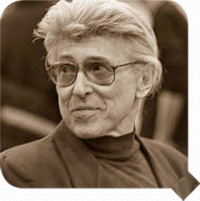
Jim Steranko was born on 5 November 1938 in Reading, Pennsylvania, USA. His interest in art started early, and as a teenager he collected cans and bottles to raise money for supplies. His first comic work was for Harvey Comics, and then a chance meeting with Stan Lee gave him that all-important first role at Marvel. Steranko went on to create his own publishing house, SuperGraphics, in 1969. Currently, he is working with Radical Publishing, designing characters for their comics and toys.
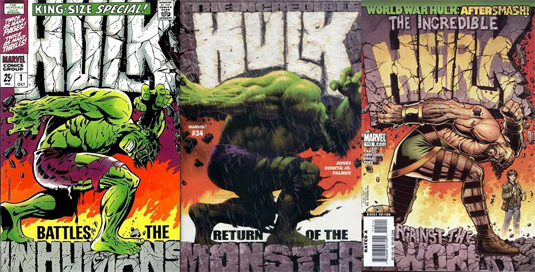
Steranko genuinely revolutionised the art of graphic storytelling. His brief three-issue stint on Captain America gave the grand old superhero a pop-art makeover, but it is Steranko's iconic cover of Giant Size Hulk, shown above, which he is most famous for.
The image has been parodied and paid homage to countless times, and remains one of the greatest comic book covers of all time. With his own publishing company SuperGraphics, Steranko was able to appraise the industry in the remarkable two-volume History of Comics, a must read for any graphic artist.
Did you know?
- Steranko was commissioned to produce original illustrations for pre-production of 'Raiders of the Lost Ark,' which heavily influenced the overall look and feel of the movie.
- He was inducted into the Will Eisner Hall of Fame in 2006.
- His only major work for DC Comics appeared in Superman #400.
Osamu Tezuka
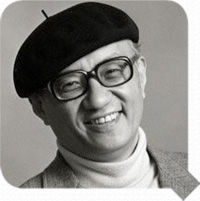
Osamu Tezuka was born in the town of Takarazuka in Osaka, Japan on 3 November 1928 and sadly passed away on 9 February 1989. He is often hailed the Walt Disney of Japan. His most notable character, 'Astro Boy', first appeared in 1951 as 'Captain Astro'. Between 1952 and 1968, Astro Boy appeared regularly in the Shonen manga, published by Kobunsha. The character is still very much loved in Japan: Astro Boy even became an honorary citizen of a town in Saitama where Tezuka had a studio.
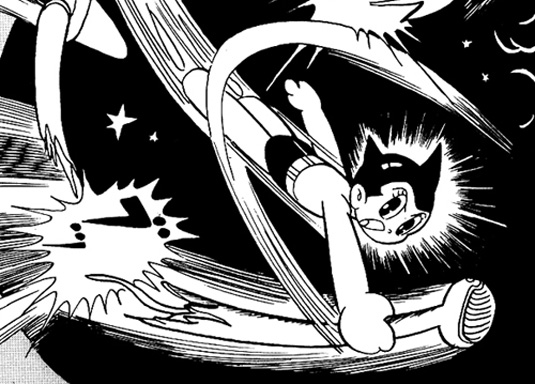
This Japanese legend has a style all of his own and counted Disney and Kubrick amongst his fervent fans. Dubbed 'the father of anime' and 'the god of Manga', he was light years ahead of the competition. He was the inventor of the 'big eyes' style of Japanese animation as well as Kimba The White Lion, a clear influence on The Lion King. His work deftly flits across genres, elements of sci-fi, mysticism, horror and history. You name it, Tezuka did it first and best.
Did you know?
- Astro Boy was the first animated series to appear on Japanese television, first appearing on Fuji Television in 1963.
- At his time of death, Osamu Tezuka had drawn over 50,000 pages of manga and had created over 60 animations.
- Tezuka published the magazine Com as a forum for young writers. He created the classic series The Phoenix for the magazine.
Steve Ditko
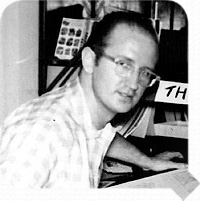
Stephen J Ditko was born on 2 November 1927 in Johnstown, Pennsylvania. He studied at the Cartoonist and Illustrators School in New York City and was regularly taught by Batman artist Jerry Robinson, who helped him get a scholarship for his second year of study. Steve started to professionally illustrate comics in 1953, working on Bruce Hamilton's science-fiction story 'Stretching Things' for Stanmor Publications. He went on to work for Marvel and worked on the likes of Hulk, Iron Man and The Amazing Spider-Man. A reclusive genius, he eventually left Marvel to work in small-run publishing.
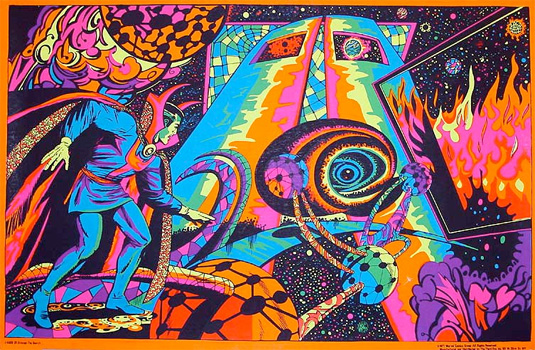
While Stan Lee is celebrated as Spider-Man's creator, Ditko had a huge impact on the comic book icon, but stepped away just as it became a global success. Where Ditko really shines is within his drawing of expressions: they can look intrigued, slightly hassled or infuriated. His backgrounds were also ground-breaking, with many claiming that he redefined New York in the early issues of Spider-Man.
Did you know?
- Steve was inducted into the Jack Kirby Hall of Fame in 1990 and the Will Eisner Hall of Fame in 1994.
- Ditko often declines interviews, stating that it is his work he offers his audience and not his personality.
- He is an advocate of the philosophy of Objectivism.
Frank Miller
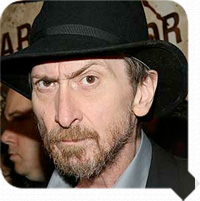
Frank Miller was born on 27 January 1957 in Olney, Maryland but was raised in Montpelier in Vermont. Miller's first published work appeared in 1978, drawing the Royal Feast in issue 84 of the TV series comic book The Twilight Zone. He soon found himself working for Marvel, and his first story featured in John Carter, Warlord of Mars, issue 18, in August 1974. His first full-length superhero story appeared in Spectacular Spider-Man, issue 27, in November 1978.
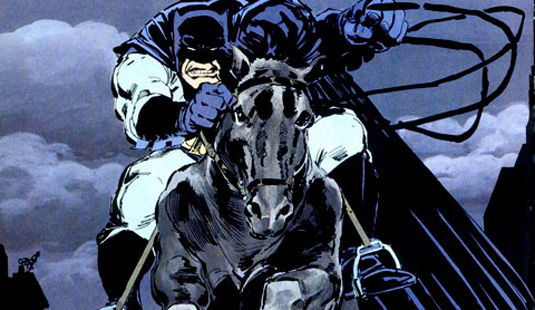
Miller's work has a distinct cinematic quality and he is lauded for his dark, film noir-style, with his graphic novels Sin City and 300 both making a strident impact on screen. But he's best known in comic circles for his artist/writer creation Batman: The Dark Knight Returns, part of 'The Holy Trinity' of modern graphic novels (along with Moore's Watchmen and V for Vendetta) which transformed the world of comics to cater for a mainstream adult audience. Miller's brooding artwork helped re-invigorate the Caped Crusader and informed the smash hit movies by Inception director Christopher Nolan.
Did you know?
- In 2005's film adaptation of Sin City, Miller appears as the vicar who is killed by Marv in the confessional.
- He also appeared in Will Eisner's 2008 live action adaptation of The Spirit as Liebowitz, the officer whose head is ripped off by the Octopus and thrown at the Spirit.
- He has three Harvey awards, four Kirby awards and six Eisner awards.
Dave Gibbons
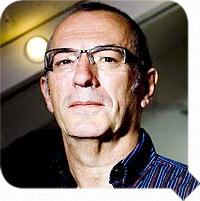
Dave Gibbons was born on 14 April 1949 in England. He started off his comic book career in the horror and action titles for IPC and DC Comics. Although widely known for his collaborations with writer Alan Moore, many claim IPC's Tornado as his best work. When 2000AD was set up, Gibbons was brought in as an art director. Gibbons later became the lead artist on Doctor Who Weekly/Monthly, drawing the main comic strip for most of the issues from #1 until #69.
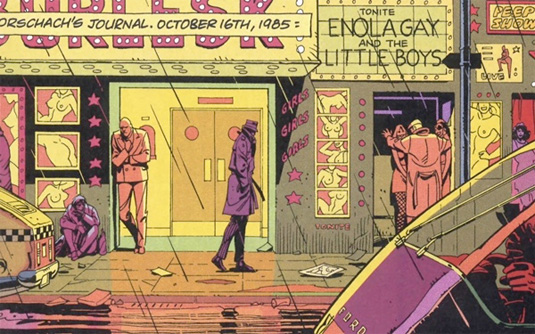
Gibbons partnered with Alan Moore in the mid-'80s to produce Watchmen, a groundbreaking work that both reflected contemporary anxieties and subtley critiqued the superhero concept. He returned to Watchmen in 2008, producing the behind-the-scenes book, Watching the Watchmen, to tie into the release of the 2009 film.
Did you know?
- Broken Sword: The Shadow of the Templars Director's Cut for the Nintendo DS and Wii featured Dave Gibbons' hand-drawn artwork.
- He won two Jack Kirby awards in 1987.
- On 9 April 2011 Gibbons was one of 62 comics creators who appeared at the IGN stage at the Kapow! convention in London to set two Guinness World Records, the Fastest Production of a Comic Book and Most Contributors to a Comic Book.
Steve Dillon

Born in Luton, England, Steve Dillon first fell in love with comic book art whilst working on a school comic book called 'Sci Fi Adventures' with school friends Neil Bailey & Paul Mahon in 1975. He got his first professional work at the age of 16, drawing the title story in the first issue of Hulk Weekly for Marvel UK. He then worked on Nick Fury, a strip about a World War Two army hero and present-day super-spy. Alongside Garth Ennis he went on to create the superior graphic novel series Preacher, which focuses on Texas and an examination of the myths and realities of the American Dream.
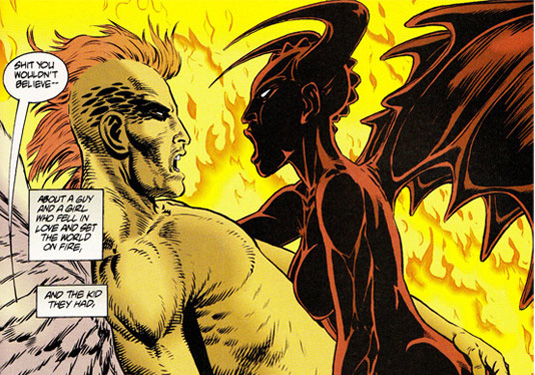
This highly violent story tells the tale of a Texan priest, his assassin ex-girlfriend, and an Irish vampire called Cassidy. Dillon's artwork along with clever and addictive storylines have enabled Preacher to become one of the most renowned comic series of our generation. In July 2007 he sold it to Hollywood for a movie/TV adaptation.
Did you know?
- Along with Brett Ewins, Dillon started the comic magazine Deadline in 1988, which continued for another seven years.
- He created the character Dogwelder, featured in the comic book series 'Hitman' by Garth Ennis.
- Dillon drew the first Wolverine: Origins issue right through to issue 25.
Jack Kirby
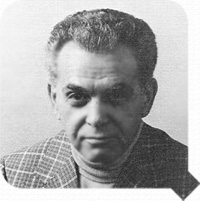
Jack Kirby was born Jacob Kurtzberg on 28 August 1917 in New York City. Sadly, he passed away on 6 February 1994, aged 76, due to heart failure. His comic career started in the 1930s drawing strips under a number of aliases before finally settling on Jack Kirby. Together with writer Joe Simon, Kirby created the character of Captain America for Timely Comics, the publisher which would go on to become Marvel Comics. He also created the Fantastic Four and the Hulk, and while working alongside Marvel's Stan Lee, he illustrated Thor and The Avengers.
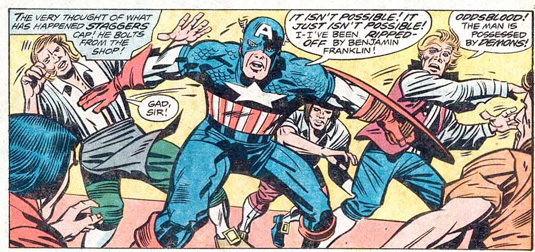
Kirby is the undisputed king of innovation: not just characters, but stories, comic devices and genres flowed from his creative juices. For more than half a century he carried the industry on his shoulders and crafted a new storytelling grammar with cinematic style of motion. The sheer force of punches thrown are explosively dynamic, looking as if they'll burst forth from the panel. There's no argument about his right to the throne of comic creators.
Did you know?
- When Kirby was drafted to fight in World War Two in 1943, he was asked to create enough comics to be published in his absence. He was honourably discharged on 20 July 1945.
- He received numerous awards, including a place in the Will Eisner Hall of Fame, before The Jack Kirby Awards were named in his honour.
- On 23 May 1942 he legally changed his name to Jack Kirby.
And that's your lot for now! Who is your favourite comic book artist? Let us know your thoughts in the comments box below!
Words: Andy Johnson and Sammy Maine
Sammy Maine is a reporter at Creative Bloq.
The Creative Bloq team is made up of a group of design fans, and has changed and evolved since Creative Bloq began over a decade ago. The current website team consists of five people: Editor Kerrie Hughes (currently on maternity leave), Acting Editor Rosie Hilder, Deals Editor Beren Neale, Senior News Editor Daniel Piper, and Staff Writer Amelia Bamsey. The 3D World and ImagineFX magazine teams also pitch in, ensuring that content from 3D World and ImagineFX is represented on Creative Bloq.
Related articles
top 10 comic book artists
Source: https://www.creativebloq.com/comics/comic-book-artists-712389
Posted by: hillsuation.blogspot.com

0 Response to "top 10 comic book artists"
Post a Comment